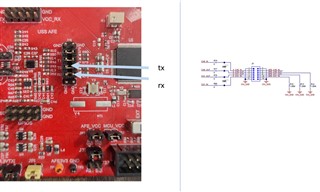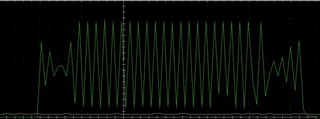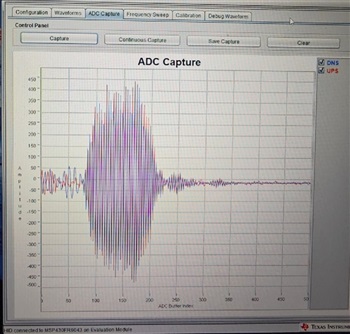Tool/software:
Hello Team,
We are using EVM430-FR6043 Development board for Air flow measurement,
Currently we are trying to observe the response on RX USS sensor using Digital Oscilloscope.
As marked in below image, we are connecting oscilloscope probe,
We are able to see TX pulse on X1 of J5 OR T0 of J9,
But we are not getting pulse/response on RX side on X2 of J6 OR R0 of J9
Additionally, we have also checked R1also,
Please help us to analyze RX response on Oscilloscope. 
This Question is in same context of out previous Query asked :
https://e2e.ti.com/support/microcontrollers/msp-low-power-microcontrollers-group/msp430/f/msp-low-power-microcontroller-forum/1325723/evm430-fr6043-need-help-to-increase-the-number-of-samples-sampling-rate/5071116#5071116



